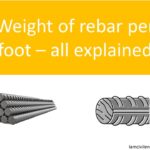Hydraulic torque wrenches, functioning as “double acting” tools for both tightening and loosening bolts, use hydraulic flow to impart pressure and induce a rotary motion. While mastering the operation of a hydraulic torque wrench may seem uncomplicated after a brief period of use, it is imperative for operators to exercise caution due to the inherent high power and potential risks associated with this device.
Here are some safety guidelines for the proper usage of a hydraulic torque wrench:

Preliminary Inspection:
Before using the hydraulic torque wrench, conduct a thorough examination to ensure the secure fastening of all its components. Following this initial inspection, it is essential to run the wrench at its full scale at least three times before commencing any task. This practice allows operators to verify that all movable parts of the wrench are functioning in the correct direction.
Calibration:
Operate the torque wrench strictly within the calibration range specified by the manufacturer. Usage beyond these recommended levels not only poses a danger to the operator but may also result in damage to the wrench itself. Regular recalibration is important; consider bringing the wrench to a calibration lab annually or after every four to five thousand cycles. Additionally, always recalibrate the wrench if it experiences a fall or impact with force.
Protective Gear:
Always wear safety goggles during operation to shield your eyes from small particles that may become airborne. Tie up long hair to keep it away from the face, and securely tuck in loose or baggy clothing into pants or fasten with a belt. This precaution is important to prevent anything from getting caught in the wrench. Opt for tight-fitting clothing and remove any jewellery before starting the job.
Socket Inspection:
Prioritize a thorough inspection of the wrench’s sockets to confirm their quality. Never use worn-out or cracked sockets, as they may fail to securely hold the wrench’s nuts. The size of the sockets should match that of the nuts for proper operation. Maintain a safe distance from the sockets while using the wrench to minimize the risk of breakage.
Hand Placement:
Hold the wrench with a firm grip on the middle handle to ensure both personal safety and efficient operation. While hydraulic torque wrenches are designed to be used without the turning of hands as with conventional wrenches, maintaining a tight hold is essential during operation. Keep both hands clear of the wrench’s reaction bar (also known as the boot). As the wrench approaches its upper torque, maintain a steady speed without pushing it.
Steady Capacity:
Avoid operating the wrench at its full capacity for every job. Each task may require a different wrench capacity. When uncertain, operate the wrench at a medium capacity for better control and to extend its lifespan. This cautious approach ensures both safety and optimal performance.
The Benefits of Hydraulic Torque Wrenches
Torque wrenches serve the purpose of tightening bolts to a specified torque, but the manual variants can be labour-intensive, potentially taking hours for certain applications. This is why hydraulic torque wrenches, also known as hydraulic wrenches, have become indispensable tools across various industries seeking an efficient solution for bolt tightening.
Like Us on Facebook!
Here are some key benefits of hydraulic torque wrenches:
Subscribe Us on YouTube!
Ideal for Heavy-Duty Bolting:
Hydraulic torque wrenches excel in heavy-duty applications. Their hydraulic mechanism generates torque effortlessly, requiring minimal user effort to tighten bolts precisely. This makes them particularly well-suited for tasks like flange bolting in heavy-duty industrial applications. As technology advances, lightweight and smaller nose-radius variants have been developed, enhancing accessibility.
Self-Ratcheting and Accurate:
Hydraulic torque wrenches are not only self-ratcheting but also boast a high level of accuracy. They are designed for overall ease of use compared to conventional impact wrenches or manual torque wrenches. Additionally, these hydraulic tools are quieter, lighter, and more precise, providing a reliable and efficient alternative.
Prevention of Under-Torquing and Over-Torquing:
An essential feature of hydraulic torque wrenches is their design to prevent both under-torquing and over-torquing. This is important as inadequate or excessive torque can lead to disastrous and unsafe outcomes. By using a hydraulic torque wrench, operators can carry out torque tasks on large assemblies with confidence, ensuring adherence to health and safety standards as well as meeting the requirements of product designers. This prevents potential hazards associated with improper torque application.
The fundamental advantages of hydraulic torque wrenches include:
Reduced Bolting Time:
Hydraulic torque wrenches contribute to a significant decrease in the time required for bolting tasks. Their efficient hydraulic operation speeds up the tightening process, enhancing overall productivity.
Enhanced Joint Integrity:
These wrenches play an important role in ensuring increased joint integrity. The hydraulic mechanism delivers precise torque, minimizing the risk of under-torquing or over-torquing, thus promoting the structural integrity of joints.
Cost Savings and Time Efficiency:
By using hydraulic torque wrenches, there is a potential for substantial cost and time savings. This is achieved by avoiding issues such as failed pressure tests and the need for repetitive bolting, preventing associated expenses and delays.
Time Allocation for Other Tasks:
The efficiency of hydraulic torque wrenches allows users to allocate time to other tasks. Freed from prolonged bolting processes, operators can focus on additional responsibilities, contributing to a more streamlined workflow.
Hydraulic torque wrenches not only fulfil the essential requirements of a torque wrench but also offer added benefits. Their hydraulic torque generation makes them particularly suitable for heavy-duty applications, ensuring both precision and efficiency while tightening bolts, thereby eliminating concerns related to inadequate or excessive torque.
Where to buy Torque Wrenches
Diverging from long-standing bolting equipment brands with a century-long legacy in Europe and the United States, our distinctiveness shines through in both product excellence and pricing. At present, TorcStark’s offerings extend beyond hydraulic hoses; we have broadened our portfolio to encompass nut and bolt-tightening tools powered by electricity and gas.


















